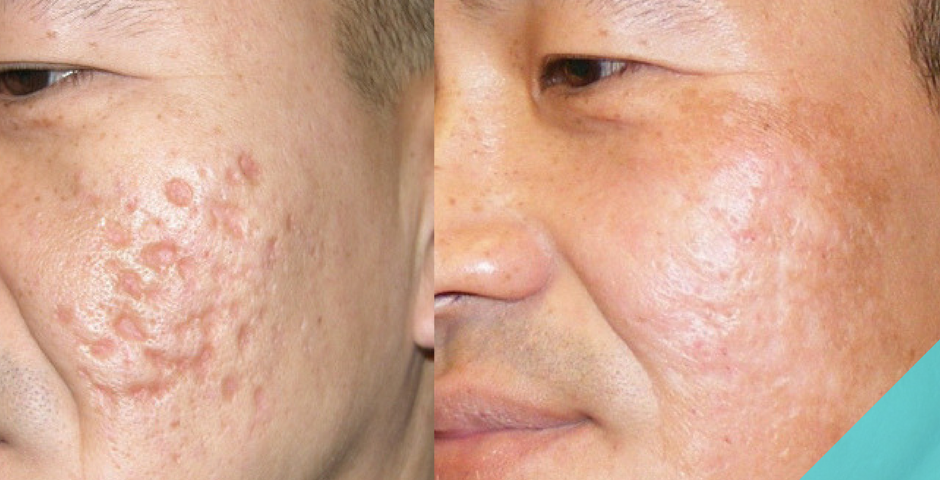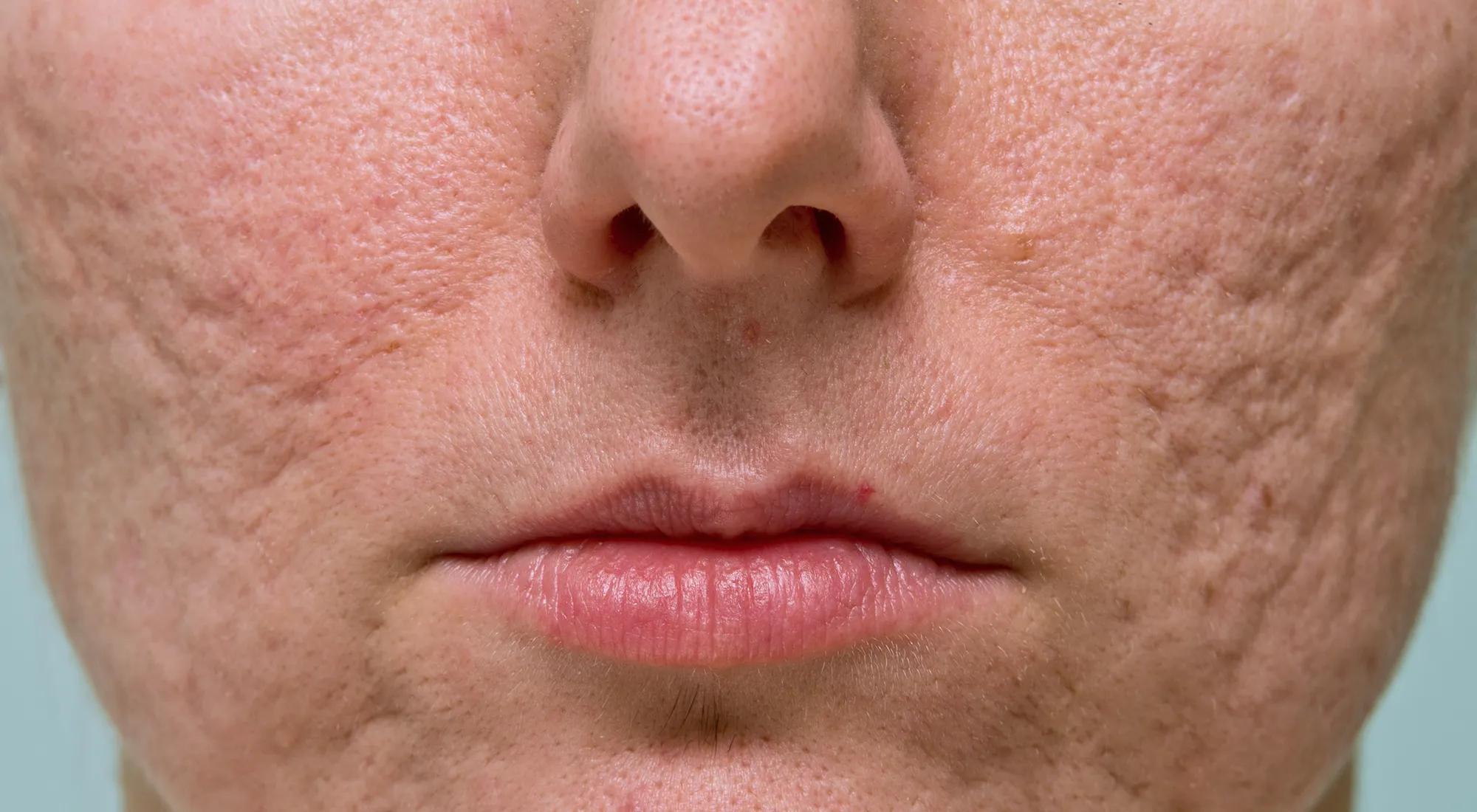How to Deal With Acne Scars: Proven Approaches for a Remarkable Skin
How to Deal With Acne Scars: Proven Approaches for a Remarkable Skin
Blog Article
Recognizing the Numerous Skin Problem and Reliable Treatment Choices for Acne Marks
Acne scars represent an intricate interplay of skin conditions that significantly effect people' self-esteem and overall skin wellness. Recognizing the unique types of acne marks-- hypertrophic and atrophic-- alongside their underlying causes, is pivotal for determining efficient therapy approaches. Various restorative alternatives exist, varying from advanced dermatological procedures to natural treatments. Nonetheless, the efficacy of these treatments typically depends upon tailored analyses by qualified professionals. As we discover the landscape of acne mark monitoring, it comes to be noticeable that the trip toward clearer skin may involve more than just topical solutions.
Types of Acne Marks

In comparison, hypertrophic marks result from an overflow of collagen throughout the healing process, bring about raised locations on the skin. These marks are frequently solid and can differ in shade, in some cases showing up red or darker than the bordering skin.
Understanding these types of acne scars is critical for developing an efficient therapy strategy - acne treatment for sensitive skin. Alternatives might consist of chemical peels, laser therapy, microneedling, or dermal fillers, tailored to the certain mark kind. A thorough assessment with a skin specialist can assist determine the most suitable intervention, taking into account the individual's skin type, scar intensity, and general skin wellness
Reasons of Acne Scarring
Marking takes place as an outcome of the body's all-natural recovery action to swelling and injury triggered by acne sores. When acne types, it activates an inflammatory action, causing the launch of different cytokines and growth elements that promote healing. This process can occasionally lead to excessive cells development or poor fixing, resulting in marks.
The key reasons for acne scarring include the extent of the acne itself, period of the sores, and specific skin kinds. Serious inflammatory acne, such as nodules and cysts, is most likely to lead to scarring due to deeper cells damages. Furthermore, improper handling of acne sores, such as choosing or squeezing, can exacerbate cells injury and inflammation, increasing the chance of scarring.
Genetic predisposition additionally plays a considerable role; people with a household background of scarring are at a greater danger. Furthermore, skin kind and color can affect scar development, as darker skin tones might experience post-inflammatory hyperpigmentation, while lighter skin may create atrophic scars.
Ultimately, comprehending these causes is necessary in managing acne and alleviating the potential for scarring.

Therapy Options for Scarring
Reliable therapy options for acne scarring differ depending upon the type and extent of the scars. Generally classified into atrophic, hypertrophic, and keloid marks, these conditions call for tailored approaches for ideal outcomes.
For atrophic scars, which are defined by a loss of tissue, therapies such as chemical peels, microdermabrasion, and laser treatment are generally used. These techniques advertise skin renewal and boost collagen production, therefore enhancing skin appearance. Subcision, a minimally invasive treatment, can also be reliable by separating coarse bands beneath the skin.
Keloid and hypertrophic scars can be a lot more challenging to treat. Alternatives include corticosteroid shots to reduce inflammation and squash the scars. In some situations, cryotherapy or laser therapy may be suggested to decrease their appearance.
Surgical choices are readily available for severe scarring, where excision or skin grafting might be essential. It's vital for people to talk to a skin specialist to analyze their specific scar kind and review the most suitable treatment strategy. Incorporating multiple therapies commonly generates the finest results, ensuring that each individual's one-of-a-kind skin problem is dealt with successfully.
Natural Remedy and All-natural Solutions
Natural services and home treatments can give an easily accessible technique for people looking for to boost the look of acne marks (acne scars treatment). Numerous active ingredients located in the home cooking area have actually shown possible advantages in improving skin structure and advertising healing

One more effective choice is lemon juice, which serves as an all-natural exfoliant and can lighten hyperpigmentation. Nevertheless, it needs to be utilized meticulously, as it may create photosensitivity. Oat meal masks are also valuable; their gentle peeling can help eliminate dead skin cells while comforting inflammation.
Crucial oils, such as tea tree oil acne scars and lavender oil, can even more sustain scar healing as a result of their antimicrobial residential or commercial properties. It is critical to carry out a spot examination before applying any type of solution to ensure there are no negative responses. These all-natural solutions can be a complementary strategy in the trip to diminish acne scars.
Stopping Future Scarring
Embracing a positive technique to skincare can substantially minimize the danger of establishing future acne scars. Regular cleansing, exfoliation, and hydration can assist preserve skin health and wellness and avoid blocked pores.
Additionally, avoiding the lure to press or choose acne lesions is crucial, as this can lead to inflammation and subsequent scarring. Rather, people need to concentrate on using topical therapies that advertise recovery and minimize inflammation. Ingredients such as salicylic acid, benzoyl peroxide, and retinoids are recognized for their efficiency in handling acne and reducing scars.
Sunlight security is one more vital part; exposure to UV rays can hinder and dim marks healing. Making use of a broad-spectrum sunscreen daily can minimize these impacts.
Lastly, keeping a healthy diet regimen rich in anti-oxidants and staying moisturized supports skin regrowth. By carrying out these safety nets, individuals can dramatically lower their threat of future scarring and promote total skin health.
Verdict
Finally, a thorough understanding of acne scars, including both atrophic and hypertrophic types, is essential for efficient therapy techniques. Customized interventions, including specialist treatments and natural remedy, can dramatically improve skin appearance and appearance. Safety nets additionally play an important duty in minimizing future scarring. Assessment with a skin doctor continues to be vital to design personalized methods that think about specific skin kinds and mark severity, ultimately improving the effectiveness of mark monitoring strategies.
Acne marks represent an intricate interaction of skin problems that considerably influence people' self-confidence and general skin health and wellness. The two primary categories of acne marks are hypertrophic and atrophic scars. These scars are more identified into three subtypes: ice choice marks, which are deep and narrow; boxcar marks, which are bigger and have distinct edges; and rolling marks, which produce a wave-like appearance due to uneven skin appearance.
A complete examination with a skin specialist can help establish the most proper intervention, taking right into account the person's skin type, mark intensity, and overall skin wellness.
Examination with a dermatologist continues to be necessary to develop personalized strategies that think about specific skin types and mark intensity, ultimately boosting the efficacy of mark management methods.
Report this page